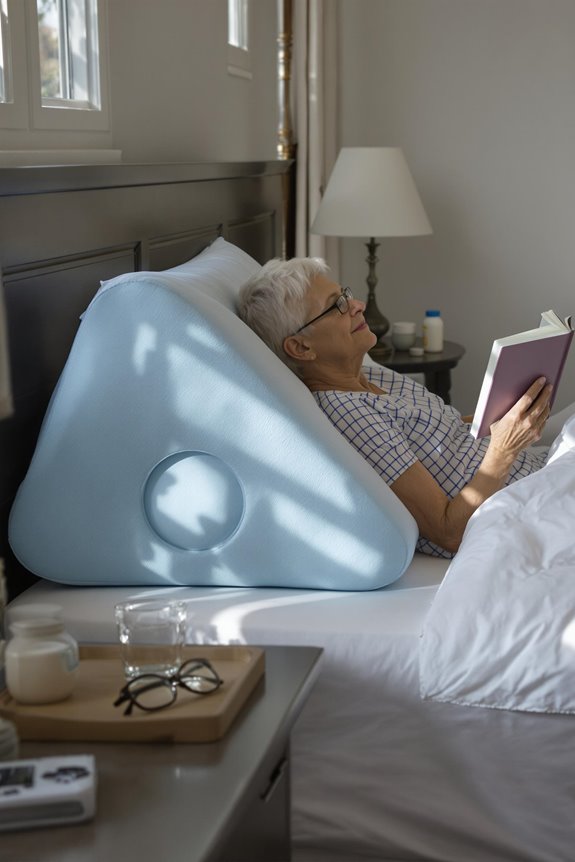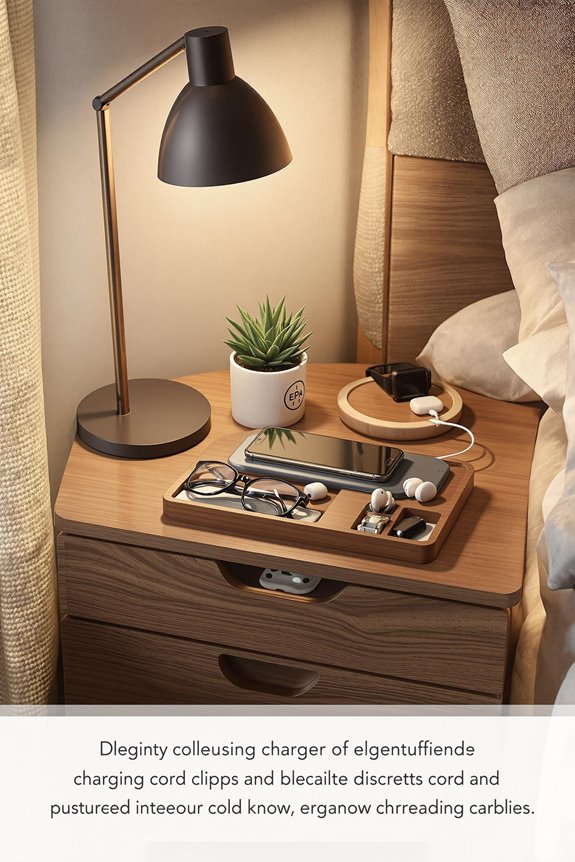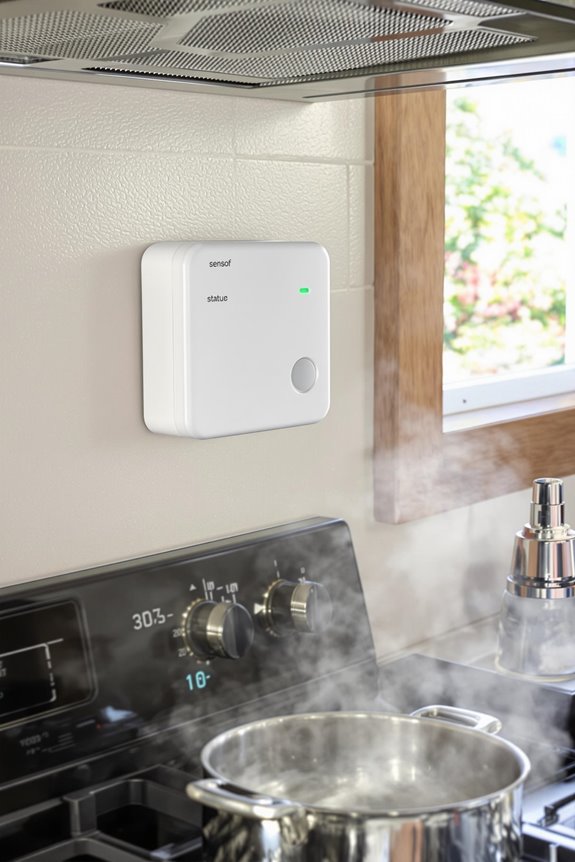If you’ve ever struggled to open a can while dealing with arthritis pain, you’re not alone. Electric can openers offer a simple solution that requires just one touch to operate, eliminating the twisting motions that cause discomfort. These devices can transform your kitchen experience from one of frustration to independence. But not all electric can openers are created equal, and choosing the wrong model might leave you facing the same challenges you’re trying to overcome.
Key Takeaways
- Electric can openers with one-touch operation eliminate painful twisting motions for seniors with arthritis or limited hand strength.
- Look for models with automatic shut-off, magnetic lid holders, and lever-free designs with easy-grip buttons.
- Quality electric openers in the $40-$60 range offer ideal balance of reliability, durability, and arthritis-friendly features.
- Position the opener at elbow height on a stable surface near your canned goods for efficient and comfortable use.
- Alternative options include ergonomic manual openers, pull-tab cans, or battery-operated models for travel and power outages.
Electric Can Openers
As our parents age, kitchen tasks we take for granted can become challenging obstacles for them to overcome. Electric can openers are essential tools for seniors struggling with hand strength or joint pain. These devices eliminate the twisting motion required by manual openers, making mealtime preparation considerably easier.
Today’s electric can openers for seniors feature one-touch operation, auto-shutoff, and smooth edge cutting to prevent injuries. Many models include accessibility features like large buttons, hands-free operation, and stable bases to prevent tipping.
When selecting an opener, prioritize units with minimal required grip strength and models that securely hold cans of various sizes.
The investment in proper kitchen tools supports your loved one’s independence while reducing frustration during daily meal preparation.
What it is and the daily problems it solves
When arthritis makes ordinary kitchen tasks painful, electric can openers become essential tools rather than mere conveniences. These devices eliminate the twisting, gripping, and pressure required by manual openers, allowing seniors to maintain independence in meal preparation.
Electric can openers work with minimal physical effort—typically requiring just a single push of a button or lever. They automatically grip the can, cut the lid, and stop when finished. This automation directly addresses the reduced hand strength, limited range of motion, and joint pain that can make opening cans a daily struggle.
For many seniors, these devices restore comfort and confidence in the kitchen. Being able to open canned goods without assistance preserves dignity and self-sufficiency, important factors in successful aging in place that extend well beyond just nutritional benefits.
Who benefits and when to use it
Three primary groups benefit from electric can openers: seniors with arthritis, individuals with limited hand strength, and anyone recovering from hand injuries.
These devices are particularly valuable during meal preparation when traditional can openers might cause pain or frustration.
Consider using electric can openers when preparing multiple meals, especially during family visits or holiday cooking.
They’re also crucial for daily use when arthritis flares up or hand strength fluctuates.
Many seniors integrate these tools into their fall prevention strategy by eliminating the struggle with manual openers that can lead to slips or dropped items.
The best times to use electric openers are when preparing soups, vegetables, or pet food – fundamentally whenever opening cans would otherwise require uncomfortable twisting or gripping motions that aggravate arthritic joints.
Key features to look for
When shopping for an electric can opener for your parents with arthritis, you’ll want to focus on specific features that make opening cans easier and safer.
Understanding what makes a can opener “senior-friendly” can help you avoid wasting money on models that might create frustration instead of independence.
Let’s look at the essential features that provide the greatest benefit for arthritic hands and limited grip strength.
Feature checklist
Choosing the right electric can opener for arthritic hands involves looking for specific features that maximize ease of use while minimizing pain points.
When shopping for your parents, focus on models that promote home safety while accommodating limited dexterity and strength.
- One-touch operation that requires minimal pressure to activate
- Automatic shut-off feature to prevent the motor from continuing once the can is open
- Magnetic lid holder that secures the sharp lid after cutting
- Lever-free design with a wide, easy-grip power button located on the front or top
- Stable, weighted base that won’t slide during operation, preventing potential spills
Remember that the best electric can opener is one that your parents can operate independently without strain, preserving their dignity while ensuring their kitchen remains a safe environment.
How to choose the right electric can openers
Finding the perfect electric can opener for your parent with arthritis requires careful consideration of several key features.
Start by evaluating their specific hand limitations—some models offer one-touch operation while others require more dexterity to position cans correctly.
Consider counter space in your parent’s kitchen. Compact models save valuable room, while under-cabinet versions eliminate the need for counter space entirely.
Weight is another important factor—lighter models are easier to move but may slide during operation.
Look for models with automatic shut-off features and smooth-edge cutting technology to prevent sharp lid edges.
The stability of the base is essential for preventing tipping, especially for users with limited strength.
Finally, choose can openers with intuitive controls featuring large, clearly marked buttons that don’t require significant pressure to activate.
Placement or installation basics
The right placement or installation of an electric can opener makes all the difference in your parent’s daily kitchen routine. Choose a counter location that’s easily accessible without reaching or bending, ideally at elbow height.
The opener should be placed near where canned goods are stored, creating an efficient workflow in the kitchen.
For counter models, verify there’s an outlet nearby to avoid dangerous extension cords. Mount wall models at a comfortable height, typically 15-18 inches above the counter.
Consider under-cabinet models to save counter space in smaller kitchens.
Always secure the unit firmly according to manufacturer instructions. The placement should allow for easy cleaning underneath and around the device, as food residue can accumulate over time and create both hygiene and operational issues.
Setup steps
Once your parent’s electric can opener arrives, setting it up properly guarantees they’ll get the most benefit from this helpful device. Most models require minimal installation, typically involving just a few straightforward steps.
First, choose a stable, accessible countertop location near an outlet but away from water sources. Remove all packaging materials, including protective plastic pieces that might be covering the cutting mechanism. Wipe down the device with a slightly damp cloth before first use.
Proper placement is crucial – select a dry, stable spot near power, and thoroughly prepare the opener before initial operation.
For countertop models, simply plug in and test by opening a small can.
Wall-mounted units require more careful installation using the included hardware and mounting template. Ascertain the opener is secured at a comfortable height that doesn’t require reaching or straining.
Finally, review the operation instructions with your parent, demonstrating how to position cans and activate the opener safely.
Costs and warranties
When planning your budget for an electric can opener, you’ll find options ranging from $20 for basic models to $60+ for premium brands with extended features.
Most manufacturers offer 1-3 year warranties, though I recommend keeping the receipt and packaging until you’re certain the device works well for your loved one’s specific needs.
Consider this an investment in both independence and safety, as the right can opener can prevent painful flare-ups and potential kitchen injuries.
Example budget
Budgeting for an electric can opener that meets your parent’s needs doesn’t have to break the bank, though prices can vary considerably based on features and quality. When planning your purchase, consider these typical price ranges and what you’ll get at each cost level.
| Price Range | What to Expect |
|---|---|
| $20-$30 | Basic models with limited features but adequate for occasional use |
| $30-$50 | Mid-range options with better durability and easier cleaning features |
| $50-$100+ | Premium models with advanced features like auto-shut off, multiple can sizes, and extended warranties |
I recommend allocating between $40-$60 for a reliable can opener that balances quality with value. This price point typically provides the durability and ease of use seniors need without unnecessary bells and whistles that drive up cost.
Daily use and upkeep
Keeping an electric can opener clean and well-maintained guarantees it will serve your parents reliably for years to come. Most models require simple wipe-downs after each use with a damp cloth to prevent food residue buildup. Never submerge the electric components in water.
For deeper cleaning, unplug the device first, then carefully detach the cutting wheel and gears according to the manufacturer’s instructions. These parts typically need monthly cleaning to prevent contamination and assure smooth operation.
When aging in place becomes the priority, even small appliance maintenance matters. Regularly check the power cord for fraying or damage, and make certain the non-slip feet remain intact to prevent counter sliding.
Store the opener in an accessible location, ideally on the countertop where it won’t require frequent moving or repositioning.
Safety tips and mistakes to avoid
As your parents navigate their daily routines with electric can openers, prioritizing safety becomes essential to prevent accidents or injuries.
Be sure to place the opener on a stable, non-slip surface before use, and keep the cord away from sinks or water sources.
Remind your parents never to touch the cutting mechanism while the opener is in operation or plugged in. Many accidents happen when someone tries to dislodge a stuck can lid while the device is still powered.
Regular cleaning is another key safety tip—food buildup can harbor bacteria or cause mechanical issues. Always unplug the opener before wiping it down with a damp cloth.
Finally, inspect the cord periodically for fraying or damage, and replace the unit if you notice any electrical problems.
Alternatives and when not to use this product
While electric can openers offer tremendous benefits for those with arthritis, they aren’t always the right solution for every situation.
Consider these alternatives when electric openers won’t work:
- Manual openers with ergonomic handles designed specifically for arthritis
- Pull-tab cans that require no opener
- Pre-cut vegetables and fruits in jars with easier-to-open lids
- Meal delivery services that eliminate the need for can opening
When creating your buying guide for kitchen tools, remember that electric can openers aren’t suitable during power outages or for camping trips.
They also require counter space and regular cleaning of the cutting mechanism to prevent food contamination.
For some seniors, the simpler battery-operated models might be preferable to electric versions, especially if remembering to plug in appliances becomes challenging with cognitive changes.
Frequently Asked Questions
Can Electric Can Openers Handle Oddly Shaped or Very Large Cans?
Most electric can openers handle standard-sized cans well, but they do have limitations with unusual shapes.
Large cans (over 28 oz) may strain motors or tip over, while uniquely shaped containers mightn’t engage properly with the cutting mechanism.
Look for models with adjustable height settings and sturdy bases for better versatility.
Hand-held electric openers often work better for odd shapes since you’re controlling the positioning rather than relying on a fixed cutting path.
How Do I Clean Under the Cutting Mechanism Without Damaging It?
Cleaning under a can opener’s cutting mechanism requires care to prevent damage.
First, unplug the device completely. Use a soft toothbrush dipped in warm, soapy water to gently scrub around the blade and gears.
For stubborn residue, apply a small amount of white vinegar with the brush.
Never submerge the electrical components or use harsh chemicals.
After cleaning, wipe with a damp cloth, then allow to dry completely before using again.
Are Battery-Operated Models as Powerful as Plug-In Versions?
Battery-operated can openers typically don’t match the power of plug-in models.
While convenient and portable, they often struggle with larger cans or those with thicker rims. If your parent has significant hand weakness, a corded electric opener will provide more consistent performance.
That said, battery technology has improved, and premium battery models can work well for most standard cans.
Consider how frequently they’ll use it and the types of cans they typically open.
Will It Work for Left-Handed Seniors?
Yes, many electric can openers work for left-handed seniors.
Look for models specifically labeled “ambidextrous” or “universal.” Most countertop units are designed for either hand, while handheld models may have ergonomic considerations that favor right-handed users.
When shopping, check that the power button and controls are easily accessible from both sides.
Some premium models feature fully ambidextrous designs with symmetrical handles and buttons that accommodate all users comfortably.
Can Electric Can Openers Cut Through Pull-Tab Cans Too?
Yes, most electric can openers will work on pull-tab cans, though you don’t need to use the pull tab itself. The opener cuts around the rim just like with regular cans.
This gives seniors with arthritis both options – they can use the electric opener or, on days when dexterity is better, pull the tab.
For left-handed users, look for models specifically labeled “ambidextrous” or “left-hand compatible.”
Bottom Line
You’ll find an electric can opener can truly transform your kitchen experience if you’re dealing with arthritis or hand weakness. By choosing a model with the right features for your specific needs, you’re investing in both independence and safety. Remember to maintain your device properly and follow safety guidelines. With this simple tool, you’re one touch away from greater kitchen confidence and mealtime enjoyment.







